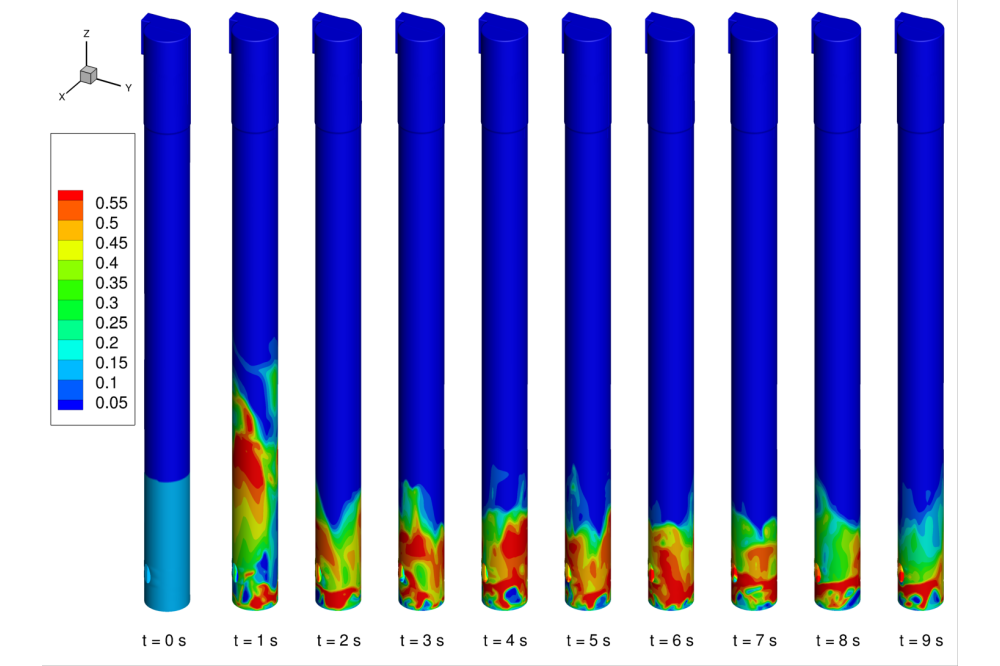Comparison of Drag Models for Fluidized Beds and Validation by Cold Flow Experiments
Einleitung
Nowadays, the design and optimization of fluidized beds are primarily based on experimental investigations which are complex and cost-intensive. In addition, a scale-up of the plants is only possible to a limited extent due to the insufficient knowledge about the real operating behaviour. With the availability of high-performance computers, the possibility to parallelize computational processes and the use of efficient algorithms, numerical simulations offer a cost-effective supplement. A major challenge, however, is the description of the solid-gas interaction (drag modelling).
Methoden
At the Institute for Energy Systems and Technology, experiments were carried out on a cold, circulating fluidized bed using sand as bed material and concentration and speed profiles were measured using a capacitive probe. The results were used to validate drag models for the CFD simulation of fluidized beds. Two drag models from literature were implemented in the two-fluid model of ANSYS Fluent and compared with experimental data and a proven drag model.
Ergebnisse
Results showed that none of the implemented models could predict the distribution of the solid material, the particle velocity and the pressure profile over the reactor height correctly.
Nevertheless all new implemented drag models showed a better agreement with the experimental results than the classic proven drag model.
Diskussion
The simulation of multiphase flows is still complicated and requires a large number of assumptions. With current computational capabilities, it is not possible to calculate the motion of individual particles in highly charged particle flows due to the high number of particles. Therefore, different models have been developed to describe particle flows. In the two fluid model the main simplification is the assumption of a continuum for the particle phase. Here (as well as in the other multiphase models), the modelling of the particle-gas interaction (drag) has a great influence on the simulation result. In this work new proposed models were tested and showed better results than the classic proven drag models. Nevertheless further improvement is necessary.




